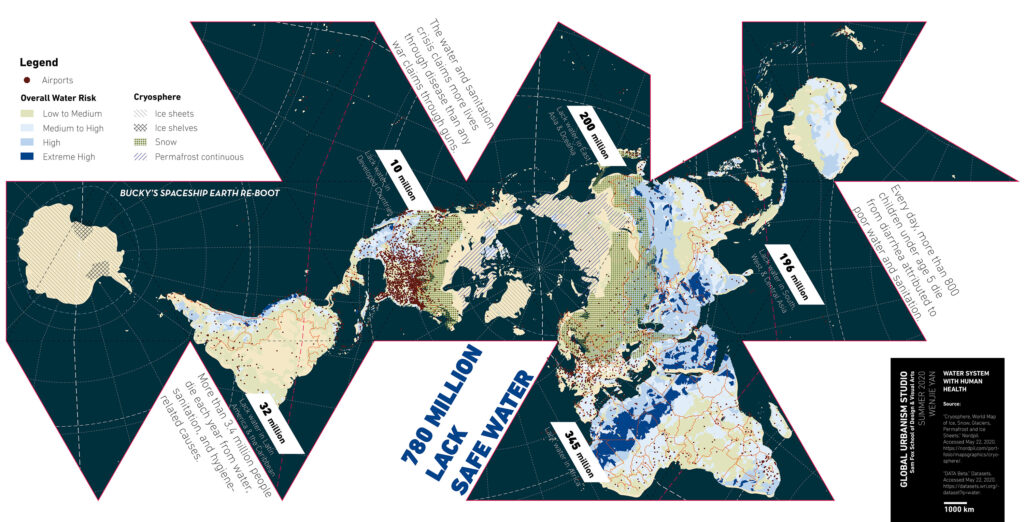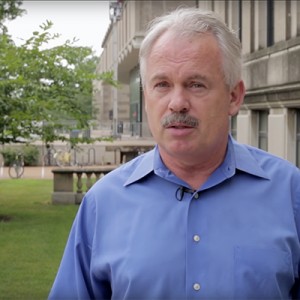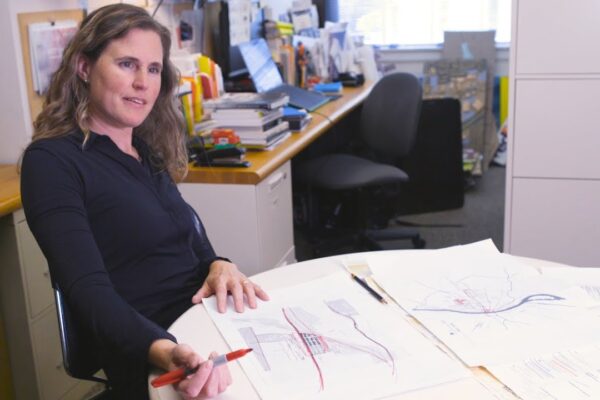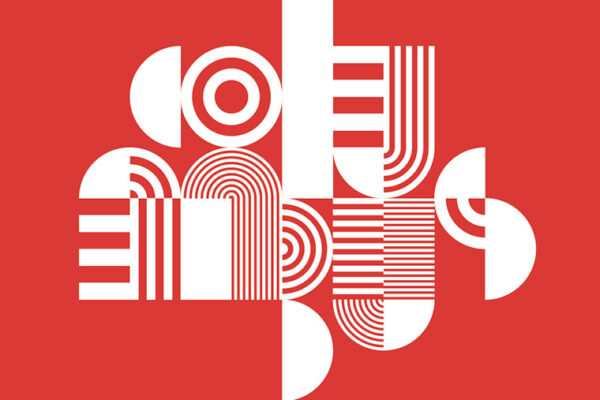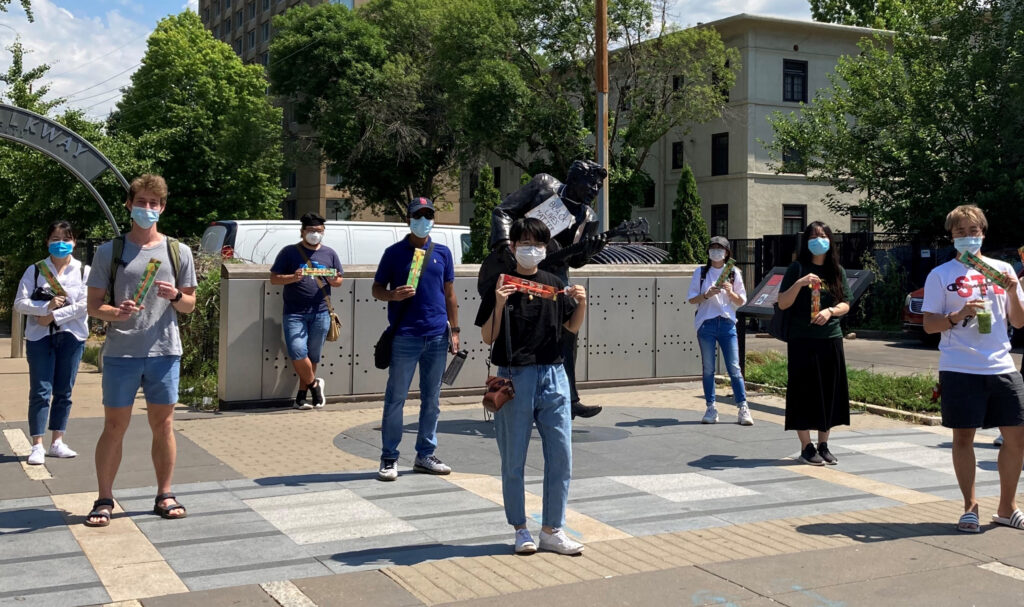
The city has changed. The city is always changing, but COVID-19 has accelerated the process. From New York and Hong Kong to Brisbane, Manaus and Copenhagen, the pandemic is reshaping the ways we think about urban space.
“In a matter of just two or three months, people have completely transformed how they negotiate the city,” said Jonathan Stitelman, visiting assistant professor of urban design in the Sam Fox School of Design & Visual Arts at Washington University in St. Louis. “COVID-19 has impacted everything from restaurants and storefronts to expectations around homes, offices and entrepreneurship.”
This summer, Stitelman is leading the Graduate School of Architecture & Urban Design’s annual Global Urbanism Studio, a 13-week program that allows Master of Urban Design students to study and work in major cities around the world. Stitelman, who has taught the studio with John Hoal and other faculty since 2016, had spent months organizing a partnership with Uganda Martyrs University in Kampala. But when the pandemic hit, travel was suddenly out of the question.
“The crisis forced us to shift to fully remote,” Stitelman said. “But in some ways, it’s been a blessing in disguise. It’s highlighted the complexities of studying abroad, and provided an opening to think about the responsiveness of cities and the interconnectedness of global networks.
“How can cities be more proactive in responding to crises?” Stitelman asked. “After COVID-19, what does the future look like? And how can designers engage the globe itself as a place of inquiry?”
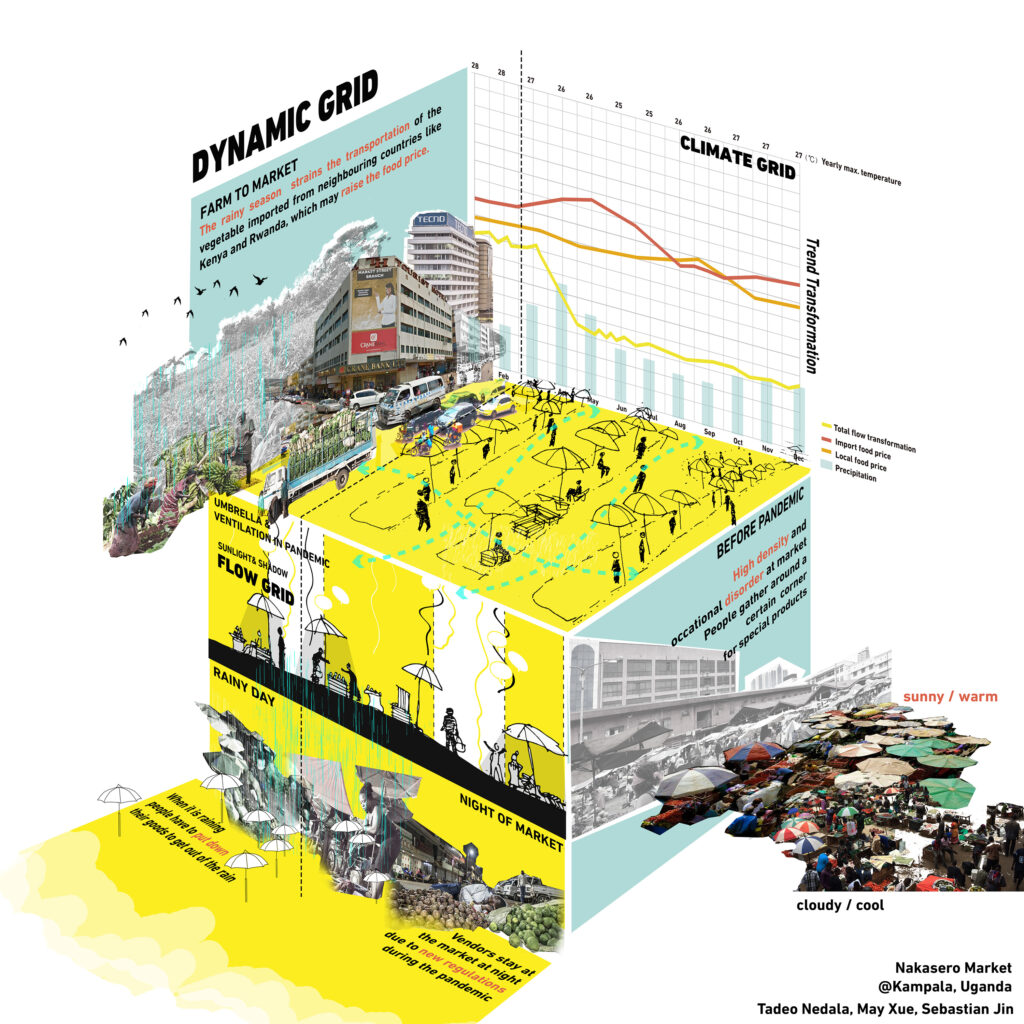
Hitting refresh
Launched in 2008, the Global Urbanism Studio explores commonalities among, and differences between, major urban centers. Under its auspices, scores of students have traveled to, and spent months situating design proposals within Tokyo, Johannesburg, Dubai, Kampala, Mexico City, Shanghai and Tijuana, among many significant world cities.
But in recent years, the rise of “on demand” global supply chains and the paradoxical hardening of national borders had convinced Stitelman and Derek Hoeferlin, associate professor and chair of landscape architecture and urban design, that the studio needed a reboot. Rather than merely compare individual cities, could the studio specifically address social, cultural and economic connections between them?
For Hoeferlin, a new approach began to crystalize last fall, during a global settlements conference in Ethiopia. “Right now, one of the main drivers of urbanization in African cities is Chinese investment,” he explained. In Addis Ababa, Ethiopia’s largest city, “It was eye-opening to see all the new bridges and skyscrapers, and all the signs written in Mandarin.
“That’s a very nuanced dynamic,” Hoeferlin continued. “But rather than retreat from it, I thought, that could be the theme for this year’s studio. What larger international forces are really driving urbanization today?
“And then COVID hit.”
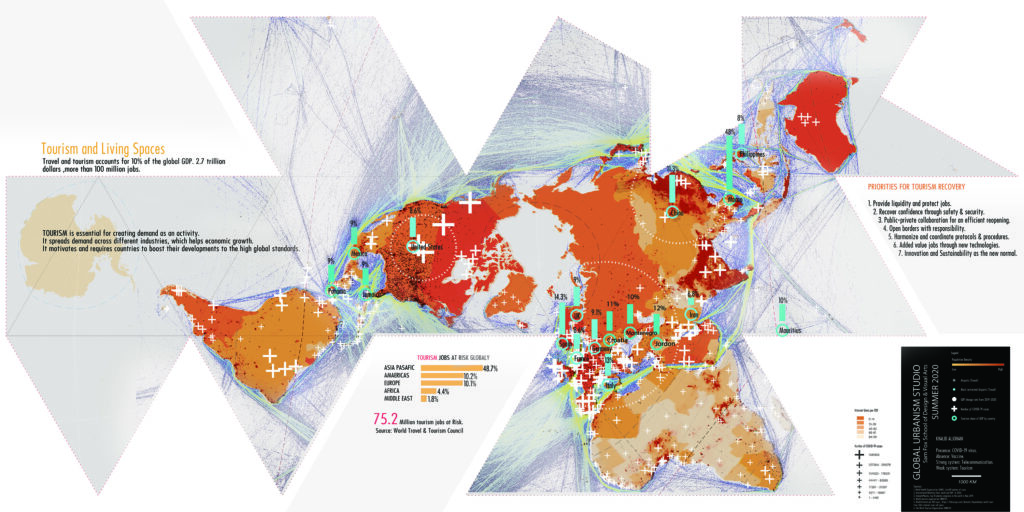
Spaceship Earth
Hoeferlin and Stitelman quickly pivoted to building a remote studio. They drew particular inspiration from Buckminster Fuller’s famed Dymaxion World Map, which depicts all seven continents as a single island surrounded by ocean — a “deck plan… for Spaceship Earth,” as Fuller described it.
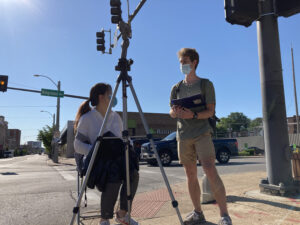
“Within two weeks, we’d mobilized 10 participants from across the globe,” Hoeferlin said. “Each guest is running either a one- or two-week workshop, and we ask them to address how their respective cities, or cities around the globe they are researching, are responding to the pandemic. What urban systems have proven resilient? What systems have been weaker than expected? How are they adapting to longer-term issues like climate change and systemic inequities?”
Over the last several weeks, students have worked with Doreen Adengo, principal of Adengo Architecture, to examine the distribution of food, health care and other resources in Kampala; with Patrick Gmür, partner at Steib Gmür Geschwentner Kyburz and former head of town planning for Zurich, to study a public market there; and with Marcus Carter and Michael Kokora — partners with OBJECT TERRITORIES, an architecture, landscape and urban design firm located in New York City and Hong Kong — to explore spatial and formal densities in these two contexts. Upcoming sections, led by Elisa Kim, founder of Atlas of the Sea, and Lola Sheppard and Mason White, partners at Lateral Office, will explore design approaches to oceans and the Arctic, respectively.
[For a complete list of participants, and recordings of select lectures, visit here.]
“Pedagogically, it’s different,” Hoeferlin said. “We’re having one-week or two-week shorts rather than one big project. It’s an experiment, and we don’t know where we will end. But a lot of our guests are already working in this format, and that’s become part of the teaching idea. For many years now, the practice of global design has already required remote interaction.”
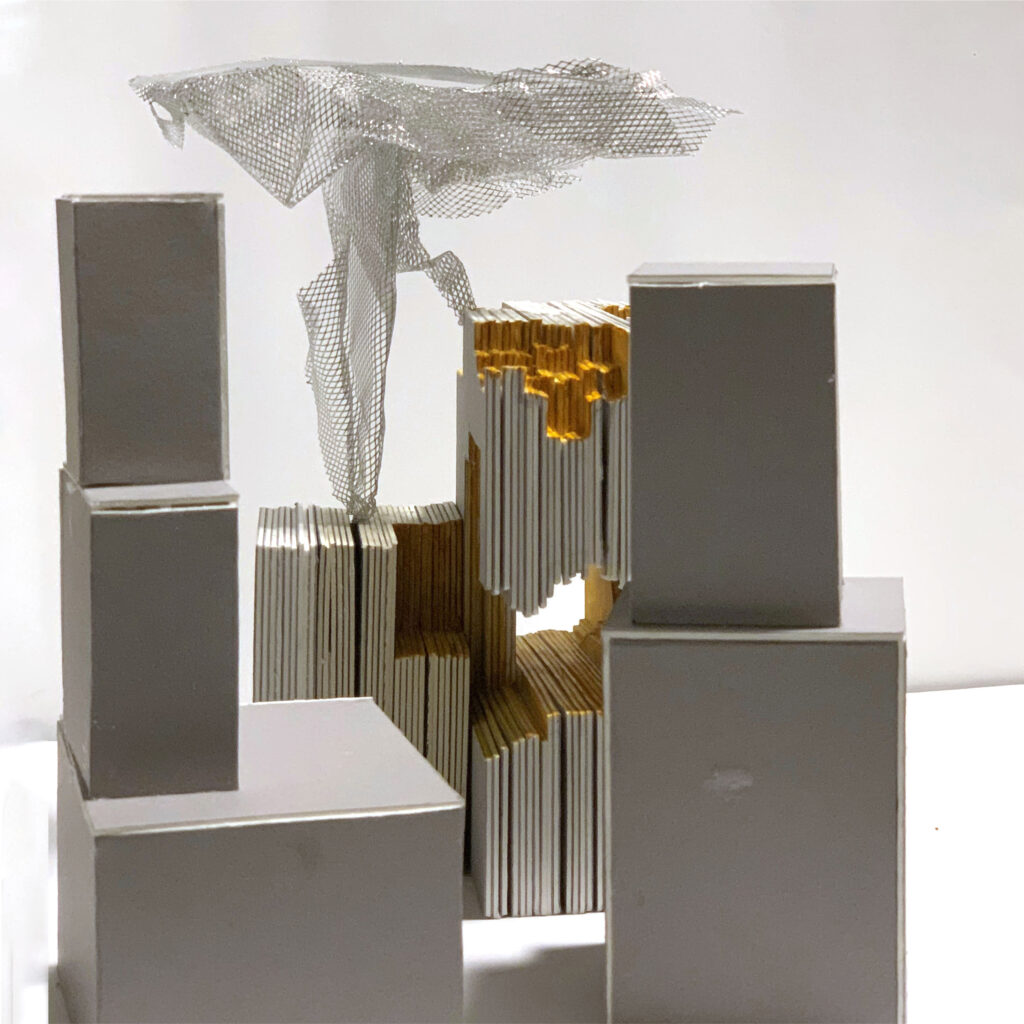
Building a case
“For me, a good studio holds two things in tension,” Stitelman said. “To begin, I ask students to draw, at the scale of the Dymaxion map, what systems the crisis has revealed as strong or weak. And they can take different positions. Some students say public health is strong, some say public health is weak; others say logistics is strong, or logistics is weak. But they have to build that case through drawing.
“The studio also burrows down into a constellation of architectural spaces and elements — into a given city’s discreet spatial, material, physical qualities,” Stitelman continued. “The flexibility of cities is a great source of resilience. How as designers can we guide a conversation on those terms? How do we support vulnerable populations, or address historic challenges? Where are the friction points?”
Hoeferlin said, “We start with the immediate crisis, but we also want to look at bigger systemic issues, like climate change, urban density, affordable housing and inequities. How do those need to be reassessed?
“For architects and urban designers, the most successful projects are ones that enact change,” Hoeferlin added. “So you test out ideas and see what sticks.”
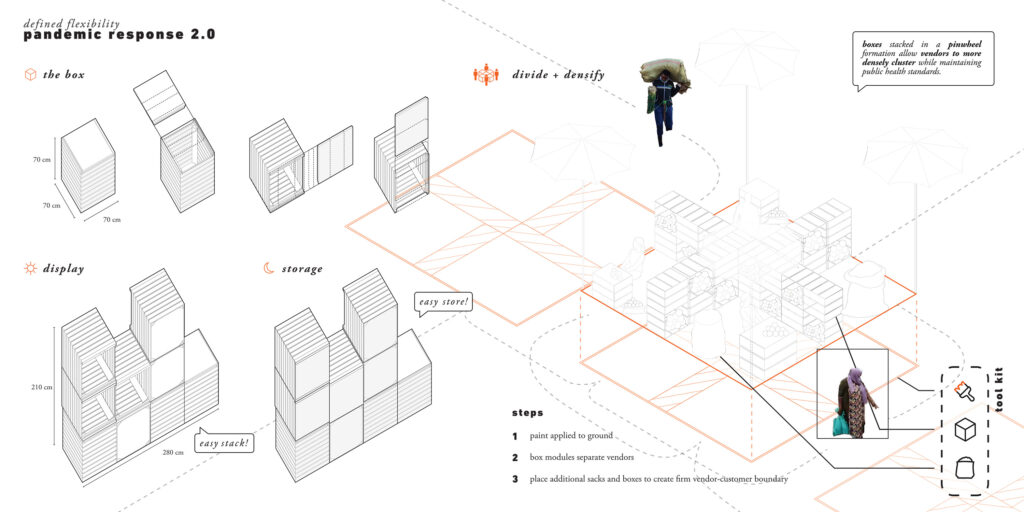
Documenting resiliency
On a sunny June morning, a dozen Global Urbanism students gathered (along with 6-foot social distancing rulers that Stitelman custom-fabricated from fluorescent string and spray painted washers) in St. Louis’ Delmar Loop. It was the first time any Sam Fox School students had formally met in person since March.
Located less than a mile north of Washington University’s Danforth Campus, the Loop is normally one of St. Louis’ busiest commercial districts. But COVID-19 closures hit the area hard. Additionally, in response to the death of George Floyd, and subsequent demonstrations against police brutality, many local shops and restaurants have covered their doors and windows with protest-related signs and artwork.
“This is a moment to reassess everything around us,” Stitelman said. “How can designers engage with that process? That’s the research of the studio.”
Of course, the first step toward change is understanding conditions on the ground. Working under the (virtual) direction of architects Oliver Schulze and Mohammed Almahmood — respectively, founding partner and head of research & innovation for the Copenhagen-based firm Schulze+Grassov — as part of the “Lively Cities” workshop, the students spent hours cataloging the qualities that have made the Loop a successful public realm, and scrutinizing where improvements might be made.
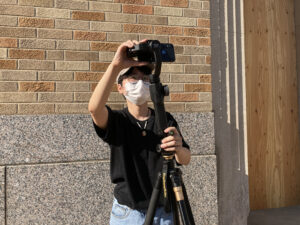
“Students observed movement and social interactions; quantified pedestrian and vehicular flow; categorized stationary activity – sitting, standing, waiting, meeting; and documented the attraction points for visitors,” Stitelman explained. “Their findings help us understand how a design proposal might make the Delmar Loop more accommodating, comfortable and resilient.”
Hoeferlin added, “The Lively Cities workshop challenged students, in a very short frame of time, to address what the pandemic and protests mean for future, democratic, equitable uses of public space and our collective rights-of-ways. Students realized that they probably won’t return to what they were before, or to a ‘new normal,’ but something different — and that’s probably a good thing.”
Days later, students presented their work as part of the Sam Fox School’s Lively Cities webinar. The online panel discussion, which is archived on the Global Urbanism Studio page, explored how social distancing practices are challenging conceptions of urbanity.
“We’re not going to ‘solve’ COVID-19 as an urban problem,” Stitelman concluded. “We’re just trying to look at it as an opening to think more freely about the future.”
